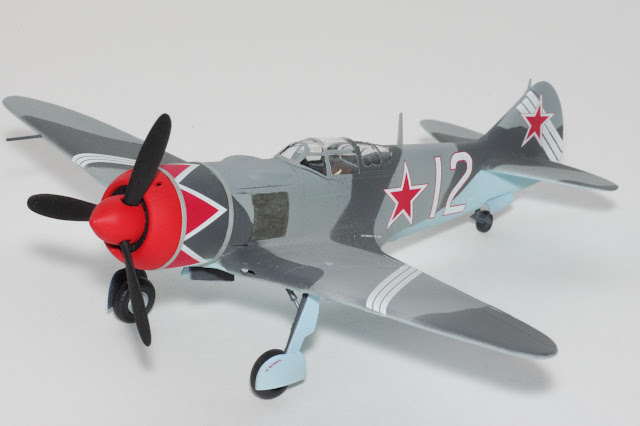I have always had an interest in the Great Patriotic War Against Fascism, as the Russians called the Second World War. I visited Russia twice in 1990 and again in 1991, just as the USSR was being swept away. It seems all the small towns and cities had museums and memorials dedicated to preserving their struggle against Nazi Germany. I was able to see a number of the aircraft produced by them during the war, and I was amazed at how crude much of the construction was. However, one must consider that the means of production had to be moved east of the Ural Mountains and often operated in open spaces, even during the terrible Russian winters.
We have too take these incredible hardships into account when considering what quality of paint was being produced. Or, whether paint was being applied at all. There are stories of how tanks left the factory in Leningrad during the siege with no paint as they rolled to the front lines which were only a few miles away.
In discussions of modeling USSR aircraft of this period, one reads on forums endless arguments about what colors they were painted. Considering the conditions under which they were manufactured and the conditions under which paints and everything else was being made during the war, how can anyone tell with great specificity what the colors looked like? I doubt the paint factory commissar was flirting with the firing squad by slowing things down arguing over the shade of green paint being applied to a T-34 or Stormovik.
Therefore, after much rummaging about on the Internet, I settled for certain Vallejo colors I thought would fit the bill. A photo of the bottle labels for those colors appears below.
The Lavochkin La-7 proved to be a solid air superiority fighter for the USSR. A very good article detailing its history appears here in Wikipedia.
I am a sucker for Eduard kits, and this one appealed to me and ended up in my stash. Although the molds are only 12 years old, they are somewhat crude and sparse in detail when compared with Eduard’s current 1/72 scale offerings. However, the model is quite workable and not at all hard to build.
All in all it was fun little build.
For some reason, most USSR radial engine fighters of the period have two bright metal bands around the cowl. Masking the stripes or bands in 1/72 scale is more than I think I could have done neatly. So, I instead painted some Tamiya masking tape Vallejo Silver and carefully cut thin strips that I wrapped around the cowl. They might be a tad wide, but I think they look good.
Thank you for looking and I hope you enjoy seeing this model. It is a nice addition to my 1/72 collection.
 |
| Vallejo Colors Used on this Model |








No comments:
Post a Comment